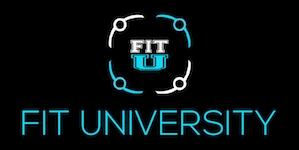Although the holidays have passed, we all know that stylish workout clothes can make it feel like Christmas year round. A fit lifestyle often comes with an growing love for workout clothes, and if you’re anything like me, your sneaker collection continues to grow extensively. When shopping, many people prioritize the style or color of their sneakers over their function and design. Do we all do the same workout? No, so we are we buying the same shoes?
Bruce Wilk, physical therapist and owner of The Runner’s High, a running specialty store in Miami, says, “The average time a consumer takes to pick out a pair of running shoes is about 10 to 15 seconds.” 10-15 seconds isnot enough time to assess if a sneaker fits and will work for its intended activity over time.
While style is definitely important (you want to buy shoes you want to wear), the correct shoe will prevent injury and also maximize the progress you see during your workouts. Outlined below are three types of workout shoes that all are designed very differently for their different purposes. There are many more types, like cycling, hiking, or Crossfit shoes, and I highly encourage you to do research and pick the right option for you!
Running Shoes
Running sneakers are designed with more cushion and stability than the regular training shoe. While some exceptions exist, like minimal shoes like Vibrams, most running sneakers provide shock absorption via air pads and cushions in the heel. Within this category there are many different types of sneakers designed to support the range of running styles our bodies fall into. Every person’s running gait is different, so to find the running shoe perfect for you, go to a running specialty store to be fitted.
At the store, an employee observes your running style and habits to fit you in the best shoe. Be sure to bring along a pair of your usual running socks, and shop later in the day. Your feet swell during the day, just like they do during a run.
Running sneakers are not designed for the lateral motions of regular training, and the padding makes it difficult to balance and exert force during weight lifting. If you want to avoid injury and see progress in your lifts, get a pair of lifting shoes!
Weightlifting Shoes
Ever seen people wearing Converse at the gym? No, these people aren’t making a footwear fashion statement- Converse have a solid, flat base that is characteristic of a weightlifting shoe! Lifting shoes don’t absorb impact like running or training shoes do, so they use all of the force your body produces to move weight. This is also why some people lift barefoot if the gym allows it- a minimal shoe helps strengthen muscles and stabilize the body.
Additionally, some lifting shoes even have a 1/2-1″ raised heel. Olympic-style weightlifters use these shoes to achieve a deeper squat through increased ankle range of motion. They also help to improve your overall position as well so if you’re looking for a serious shoe look for that raised heel!
Cross Training Shoes
Cross-trainers are designed to play multiple roles in the gym. You can use them for almost any activity — yoga, elliptical, stretching, or a Zumba workout. Cross-trainers are oftentimes heavier than a running shoe, as they have more support for lateral movements.
Unlike running sneakers, there are less options, as most training shoes don’t differentiate by foot type. Because they have no specific function, they are perfect if you like to mix up your workouts. You also need a general sneaker so you don’t wear down your running sneakers at the gym!
Check out these articles too:
